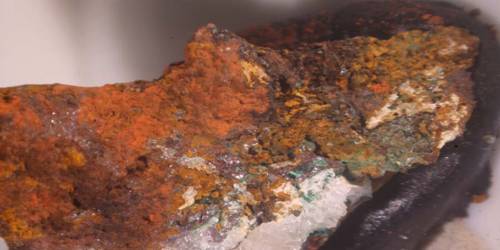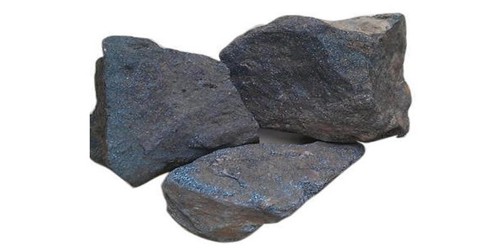Djurleite is a copper sulfide mineral of secondary origin with formula Cu31S16 that crystallizes with monoclinic-prismatic symmetry. It is typically massive in form but does at times develop thin tabular to prismatic crystals. It occurs with other supergene minerals such as chalcocite, covellite, and digenite in the enriched zone of copper orebodies.
Djurleite was named for the Swedish chemist Seved Djurle (1928–2000), from the University of Uppsala, Sweden, who first synthesized the mineral in 1958, prior to its discovery in nature.
General Information
- Category: Copper sulfide
- Formula: Cu31S16
- Crystal system: Monoclinic
- Crystal class: Prismatic (2/m) (same H-M symbol)

Properties
Djurleite is brittle, with a conchoidal (shell-like) fracture. It is a soft mineral, with hardness 2 1⁄2 to 3, a little less than that of calcite. The specific gravity, 5.63, is high, due to the copper content, djurleite is denser than the copper-iron sulfide bornite, but not as dense as the iron-arsenic sulfide arsenopyrite.
- Formula mass: 2483 g/mol
- Color: Grey, blue-black or black
- Crystal habit: Crystals are short prismatic and thick tabular, also massive and compact
- Cleavage: None
- Fracture: Conchoidal
- Tenacity: Brittle
- Mohs scale hardness: 2.5 to 3
- Luster: Submetallic to metallic
- Streak: Black
- Diaphaneity: Opaque
- Specific gravity: 5.63
Occurrence
The natural material was first described in 1962 by E H Roseboom Jr, of the US Geological Survey, from occurrences at the type locality, Barranca del Cobre, Chihuahua, Mexico. The type locality is Barranca de Cobre, Chihuahua, Mexico, and the type material is conserved at the Royal Ontario Museum, Toronto, Canada, M25369, and at the National Museum of Natural History, Washington, DC, US.
Information Source:
















